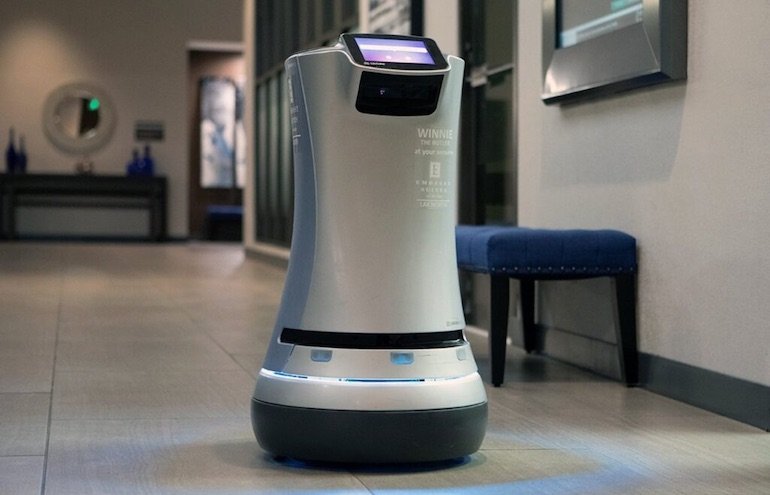
When we think of autonomous navigation, the first thing that usually comes to mind is self-driving cars. Although their development has spanned decades, recent years have seen significant advancements.
One important framework that is used ubiquitously in the self-driving car industry is the classification of levels of driving automation. Defined by the Society of Automotive Engineers (SAE) in 2014, this framework remains a standard reference in the field.
While indoor mobile robots have enjoyed nowhere near the fame that self-driving cars have, they’ve evolved substantially in the past decade as well. Driven by staff shortages, service robots are increasingly being deployed across various industries, including hospitality, healthcare, warehouse and logistics, food service, and cleaning.
Relay robots in particular, are being deployed in busy hospitals and hotels across the world. However, unlike automated driving, there is currently no widely adopted standard for levels of autonomous navigation for indoor robots. Our objective is to present such a framework.
Given the inherent availability of a human driver as fallback in self-driving cars, much of the SAE framework is based on the distribution of driving responsibilities between the human driver and the self-driving agent. Level 0 indicates no automation where the human driver is completely in control.
Levels 1, 2, and 3 have varying degrees of partial automation. At Level 4, the vehicle is fully self-driving, but only under certain defined conditions. Leading self-driving companies like Waymo have achieved this level of autonomy.
Finally, Level 5 is full automation everywhere and in all conditions. This level has not been achieved yet.
What influences levels of autonomous navigation for indoor robots?
Installation complexity
Indoor robots do not have an inherent partnership with a human driver. Essentially, they begin at Level 4 of the SAE framework in this regard. But indoor robots do have a different advantage, another crutch to rely on instead at initial levels of autonomy — the ability to modify their environment.
For example, modifying a building’s infrastructure by painting lines on the floor or placing landmarks on the walls is not as difficult relative to modifying all road infrastructure. Such markers can be very helpful aids for automated guided vehicle (AGV) navigation.
In general, indoor robots today go through an installation process before being put into operation. In addition to modifying building infrastructure, mapping, labeling, and other required setup can be a part of this process. This can often be cost-, time-, and labor-intensive.
The more advanced the navigation skills of the robot though, the less complicated the installation process tends to be. And lower installation complexity leads to lower cost and friction for adoption.
Installation complexity is thus an important factor to consider while defining the levels of autonomous navigation for indoor robots.

Content retrieved from: https://www.therobotreport.com/relay-robotics-explains-autonomous-navigation-levels-indoor-robots/.






